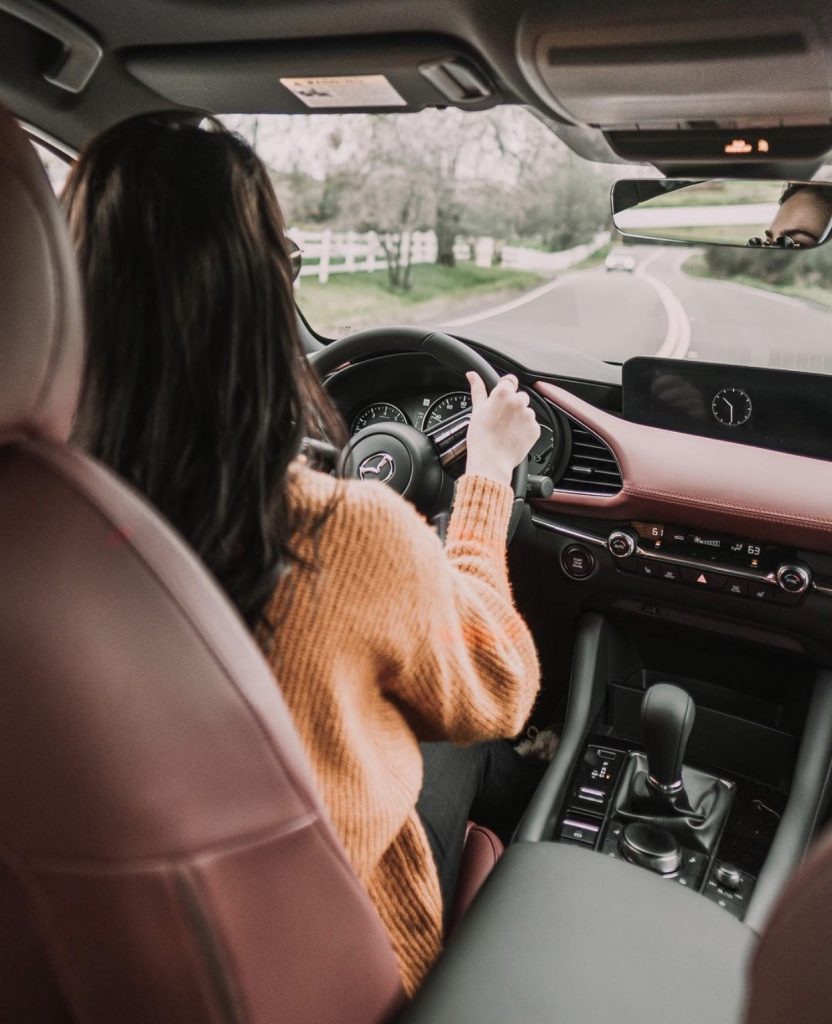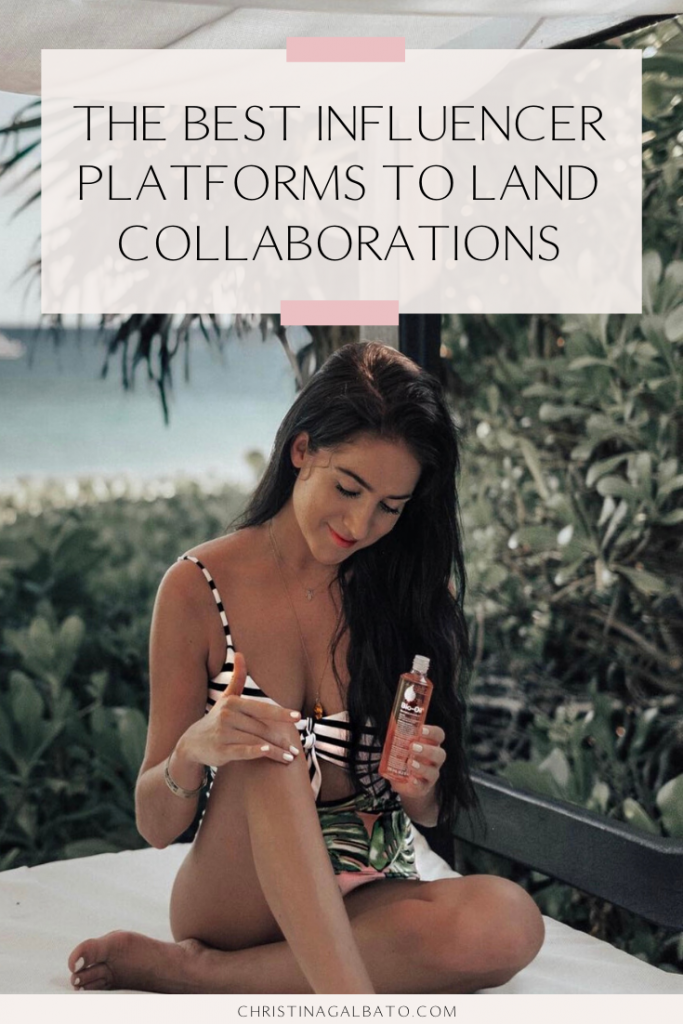One of the most common questions I receive from aspiring influencers is “how do I land brand collaborations?” Although there are multiple ways in which you can start working with brands, in this blog post, I’ll discuss utilizing influencer marketing platforms.
An influencer marketing platform is a database designed to connect brands and creators. These platforms work with creators and brands on both ends of a campaign. Influencer marketing is becoming increasingly popular because consumers put more trust in organic forms of marketing efforts. This means influencers, of all sizes, are and will continue to be in demand.
If this is your introduction to the world of influencer marketing platforms, fear not. In this blog post, I’ll be discussing everything you need to know about using these platforms as a content creator.

The Ultimate Guide to the Top Influencer Marketing Platforms
I know what some of you may be thinking — can I start connecting with brands through these platforms even if I have a small following?
The answer is simply: yes.
In fact, the need for nano and micro-influencers is greater than you may think. Contrary to popular belief, you don’t need 100K followers before you start working with brands. In general, nano and micro-influencers see higher engagement rates than influencers with a large following.
Additionally, when a nano and micro-influencer promotes a brand, the advertisement feels more organic. Most people are more likely to purchase a product based on a friend’s recommendation, as opposed to a celebrity’s endorsement. These platforms are available for every influencer to utilize, some with no audience size requirements.
Influencer Marketing Platforms vs. Influencer Marketing Agencies
To clarify, an influencer marketing platform is not the same as an influencer marketing agency. However, certain influencer marketing platforms also operate as an agency as well. To help you differentiate the two, here is a break down of their main differences:
Influencer marketing platform: this is a technology-based platform that pairs brands and influencers based on the database.
Influencer marketing agency: an agency consists of a team of people who aids the brand in selecting the right influencers for specific campaigns.
These platforms are easy to use as briefs and posting guidelines are generally provided to influencers before they join a campaign. Whereas influencer marketing agencies usually help the brand with the creative process as well, even hand selecting influencers who would fit the campaign’s requirements.
The Benefits of Using an Influencer Marketing Platform
Utilizing an influencer marketing platform can save you a lot of time. Instead of having to hunt down the right contact information for a brand and crafting a pitch, you can start browsing the types of campaigns a variety of brands are hiring for and vet if they are the right fit for you. On the other hand, brands also benefit from working with influencers through these platforms since they can better track the effectiveness of their campaign.
10 Best Influencer Marketing Platforms for Influencers
There are hundreds of influencer marketing platforms that connect brands with influencers of all sizes. It is important to know which platforms are the right fit for you to ensure you’re being discovered by the right brands. Instead of providing you with a complete list of all the platforms that are available, here are the top 10 influencer marketing platforms for content creators, how to use them, and what makes them great.
1. Collectively
This award-winning platform has been connecting brands and influencers since 2013. They are one of the leading marketing agencies that link top brands with social media influencers. Collectively works with brands like Delta, converse, EOS, Zappos, and LinkedIn.
The company has also stepped up and commit to change by a number of measures to make Collectively more inclusive.
If you’re an influencer and would like to join Collectively’s community of creators, listen to this episode of Her Life, By Design with Collectively’s senior manager, Fatima Scott. In the episode, Fatima discusses what Collectively looks for in influencers to work with, how influencers can start landing collaborations, which Instagram metrics are most important, and why micro-influencers are poised for more success than ever in 2020.
Apply here to join Collectively’s community of creators.
2. Fohr
Fohr is a free membership network for influencers and bloggers. What makes Fohr a real standout influencer marketing platform is its commitment to transparency. The name of the game for Fohr is an in-depth insight into audience demographics and the overall health of your audience.
This gives nano and micro-influencers more of a voice as Fohr favors true engagement over buying likes and followers. Fohr provides influencers on their platform access to their infamous Follower Health Score. This score provides in-depth information about your audiences, such as their personal interests and the other creators they follow.
3. Tribe
This self-serve influencer marketing platform focuses specifically on micro-influencers. Tribe has partnered with over 3000 brands, including HSBC, Canon, and Bumble. This app is the place to be for micro-influencers wanting to land a brand collaboration.
Brands post their campaign’s brief directly to Tribe’s platform, making it easy for influencers to vet the campaign and assess if it would be a great fit. Tribe places importance on authenticity over how large your following is. Their pre-requisite to joining includes a vetting process that ensures each influencer has upwards of 3,000 genuine followers.
Tribe has connected micro-influencers to large brands such as Dove, Ikea, and Land Rover.
4. Popular Pays
Popular Pays is an all-in-one platform for influencers and brands to discover, collaborate, build content, and develop relationships. This influencer marketing platform connects creators with both boutique and enterprise brands.
Once you create a profile, you can upload a portfolio that features samples of your work. From there, you can apply to the numerous campaigns available on their platform, either as an influencer or content creator, and get paid for your work.
Brands that have worked with Popular Pays include Amazon, Starbucks, Banana Republic and Google.
5. Cohley
Cohley is an all-encompassing influencer marketing platform for content creators. Whether you’re an influencer, professional photographer or videographer, Cohley forges relationships between creators and brands in various niches.
Although collaborations range from gifted products to paid campaigns, Cohley prides themselves in their wide array of brands ranging from the food/beverage industry to fashion and beauty. For Cohley, creating inspirational content is the most important ask of their creators.
Some brand partnerships that Cohley has fostered include companies such as Untuckit, Kitehill, Olly, Care Of, and CVS.
Apply to be a creator on Cohley here.
6. Obviously
Great for influencers of all sizes, Obviously automatically matches campaigns that are suitable for your account’s size and niche. Influencers won’t have to worry about applying and getting approved for brand campaigns as Obviously will help creators filter the brands that are interested in you.
To encourage their influencers, Obviously has a rewards program called the Corgi Rewards. Once you’ve partnered with a brand, followed the campaign brief to the tee, and submitted your post by the deadline, you get awarded a Corgi (Obviously’s equivalent of a point… not an actual corgi).
Once you’ve collected 10 Corgis, you can cash it out for a $100 PayPal bonus. This system ensures a great working relationship between influencers and the platform.
Obviously pairs creators to brands such as Coca-Cola, Calvin Klein, Amazon, and Lyft.
7. Tapinfluence
Tapinfluence allows influencers to call the shots. To join, you must create a profile and set the type of collaborations you’re interested in. From there, Tapinfluence will calculate your estimated monthly earning potential.
The platform will provide metrics from your total reach, cost per engagement, to other useful analytics including your audiences’ interests. Signing up is free and Tapinfluence will expose your profile to brands such as Whole Foods, Canon, and Target.
Create a profile on Tapinfluence here.
8. Boksi
This influencer marketing platform focuses on nano to micro-influencers. The most attractive aspect of Boksi is there is no follower limit and requirements for creators. The platform is free to join but takes a 20% commission from any collaboration that you land through Boksi.
Boksi operates through two different types of campaigns: content and influencer. Content campaigns are photos or videos submitted to a brand. These campaigns don’t require creators to post the images directly on their accounts. Influencer campaigns through Boksi are typical brand collaborations, where creators receive a product and payment in exchange for sharing brand-specific content with their audiences.
Boksi has partnered creators with brands such as Burger King and MTV.
9. BrandSnob
BrandSnob provides brands with a database of 15,000+ influencers. In order to use the platform, creators must have over 5000 followers, create a profile, and download the app. All creators must submit an application and be approved before connecting with brands through the platform.
Once approved, BrandSnob will start notifying you of new and relevant campaigns. Brands on the platform can also start browsing your profile and directly request you for any upcoming campaigns.
BrandSnob has partnered influencers with brands such as Toms, Tinder, ASOS, and Boohoo.
Apply to become a BrandSnob influencer here. **Since publishing this post it appears that BrandSnob is no longer in business
10. AspireIQ
This influencer marketing platform has connected over 500,000 creators to brands. AspireIQ’s platform provides influencers with a list of brands and campaigns that are currently seeking creators and content each week. Their focus is on connecting influencers directly to brands so you can build a partnership on your own terms.
Once the deliverables are submitted and a campaign is completed, AspireIQ pays influencers directly through PayPal without taking a commission. Not to mention, the platform is completely free to use. AspireIQ has a database of brands in multiple industries from fashion and fitness to wellness and pets.
Influencers on AspireIQ have been paired with brands such as Marriott, Bed Bath & Beyond, L.L. Bean, and Nike Swim.
Land Brand Collaborations at Any Size
When it comes to landing brand collaborations, the size of your following does not really matter. The most important metric that brands are looking for lies in the quality of your content and your engagement rate.
In this episode of Her Life, By Design — Charlotte Williams, founder of SevenSix influencer marketing agency, shares a story about an influencer she worked with had a following of 3k but a reach of 80k. Your reach and influence as a creator are more important to brands than the total number of followers you have.
Start focusing on creating high-quality content that you know your community wants to consume. If you need a little guidance when it comes to negotiating brand deals, check out this blog post. At the end of the day, brands are interested in how engaged your community is, and those answers lie in your insights.
Whether you’re pitching directly to brands or utilizing one of the many influencer marketing platforms, the quality of your content is key. Focus on creating high-quality content and growing a community as opposed to a large following. Most of all, never underestimate your power as an influencer just because of your follower count.
Save this Post:








+ show Comments
- Hide Comments
add a comment